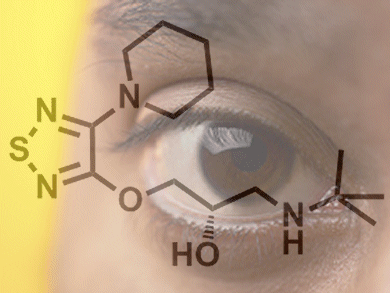Glaucoma is a severe ocular disease that occurs when the optic nerve is damaged. Although different antiglaucoma drugs exist, patient compliance is a big problem. To overcome this issue, Dean Ho and co-workers, Northwestern University, USA, have developed nanodiamond-based contact lenses capable of delivering the glaucoma drug timolol maleate (TM).
The researchers coated nanodiamonds (ND) with polyethyleneimine and than cross-linked them with N-acetylated chitosan in the presence of timolol maleate. In this way, the scientists obtained ND-based nanogels carrying the therapeutic drug. Subsequently, they embedded these ND-nanogels in a hydrogel (a 2-hydroxyethyl methacrylate matrix) and casted them into contact lenses. As N-acetylated chitosan is an enzyme-cleavable polysaccharide, it can be hydrolyzed by lysozyme, an enzyme present in the lacrimal fluid. Thus, when the TM-loaded ND-based contact lenses were exposed to the lacrimal fluid, the lysozyme degraded the ND-nanogels thereby releasing timolol maleate while leaving the lenses intact.
The novel ND-based contact lenses allow the release of timolol maleate in a controlled and sustained manner, and, consequently, they may improve patient compliance.
- Diamond Nanogel-Embedded Contact Lenses Mediate Lysozyme-Dependent Therapeutic Release,
Ho-Joong Kim, Kangyi Zhang, Laura Moore, Dean Ho,
ACS Nano 2014.
DOI: 10.1021/nn5002968



